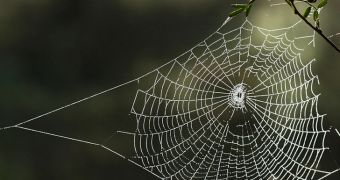Electrified insects are more likely to become some spider's next meal. This is because they have higher chances of getting caught in webs woven by these predators.
Specialists explain that most spider webs are either negatively or neutrally charged. By contrast, insects that constantly flap their wings in order to travel from one place to another get positively charged.
In the everlasting words of Paula Abdul, opposites attract. Hence the fact that these very unlucky electrified insects draw the web in their direction and inevitably get caught in it.
“Using a high speed camera, you can clearly see the spider web is deforming and touching the insect before it reaches the web.
“You would expect that if the web is charged negatively, the attraction would increase,” researcher Victor Manuel Ortega-Jimenez explains.
Bees and flies are known to build up a positive electrical charge whenever they flap their wings, so it's no wonder they are the ones spiders most often get to feast on.

 14 DAY TRIAL //
14 DAY TRIAL //